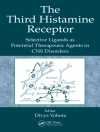This book follows a successful symposium organized in June 2009 at the Human Brain Mapping conference. The topic is at the crossroads of two domains of increasing importance and appeal in the neuroimaging/neuroscience community: multi-modal integration, and social neuroscience.
Most of our social interactions involve combining information from both the face and voice of other persons: speech information, but also crucial nonverbal information on the person’s identity and affective state. The cerebral bases of the multimodal integration of speech have been intensively investigated; by contrast only few studies have focused on nonverbal aspects of face-voice integration.
This work highlights recent advances in investigations of the behavioral and cerebral bases of face-voice multimodal integration in the context of person perception, focusing on the integration of affective and identity information.
Several research domains are brought together. Behavioral and neuroimaging work in normal adult humans included are presented alongside evidence from other domains to provide complementary perspectives: studies in human children for a developmental perspective, studies in non-human primates for an evolutionary perspective, and studies in human clinical populations for a clinical perspective.
Several research domains are brought together. Behavioral and neuroimaging work in normal adult humans included are presented alongside evidence from other domains to provide complementary perspectives: studies in human children for a developmentalperspective, studies in non-human primates for an evolutionary perspective, and studies in human clinical populations for a clinical perspective.
Several research domains are brought together. Behavioral and neuroimaging work in normal adult humans included are presented alongside evidence from other domains to provide complementary perspectives: studies in human children for a developmental perspective, studies in non-human primates for an evolutionary perspective, and studies in human clinical populations for a clinical perspective.
Several research domains are brought together. Behavioral and neuroimaging work in normal adult humans included are presented alongside evidence from other domains to provide complementary perspectives: studies in human children for a developmental perspective, studies in non-human primates for an evolutionary perspective, and studies in human clinical populations for a clinical perspective.
Table des matières
Multisensory Recognition in Vertebrates (Especially Primates).- Cross-Modal representation in Humans and Non-Human Animals: A Comparative Perspective.- Representation and Integration of Faces and Vocalizations in the Primate Ventral Prefrontal Cortex.- Intersensory Perception of Faces and Voices in Infants.- The Early Development of Processing Emotions in Face and Voice.- Audiovisual Integration in Speaker Identification.- Cross-Modal Integration of Identity and Gender Information Through Faces and Voices Involves a Similar Cortical Network.- Neurophysiological Correlates of Face and Voice Integration.- Integration of Face and Voice During Emotion Perception: Is There Anything Gained for the Perceptual System Beyond Stimulus Modality Redundancy?.- Cross-Modal Modulation of Spatial Attention by Emotion.- Audiovisual Integration of Emotional Information from Voice and Face.- Audiovisual Integration of Emotional Information from Voice and Face.- Crossmodal Integration of Emotional Stimuli in Alcohol Dependence.- The Role of Audition in Audiovisual Perception of Speech and Emotion in Children With Hearing Loss.- The Role of Audition in Audiovisual Perception of Speech and Emotion in Children With Hearing Loss.












